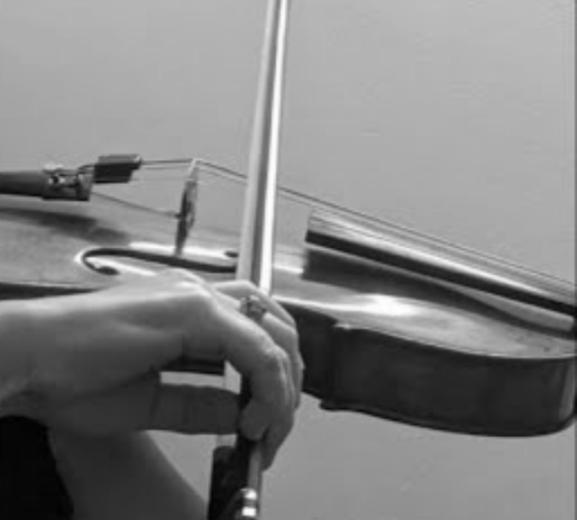
I’ve been thinking long and hard about where to begin the discussion on best practices to minimize unnecessary tension in the bow arm. The complexities of bow technique development for good tone production, various articulations, dynamics, and expression can easily lead one to develop bad habits somewhere along the way.
The most common problems with bow arm tension in players of ALL levels are:
- a stiff hand (sometimes caused by poor bow hold, in which fingers are too close together or too far apart, causing lack of flexibility/mobility in bow fingers and inability to transfer weight)
- a straight/stiff thumb (making complex bow strokes difficult and general limit of resonance in tone; can cause tendonitis)
- locking at the elbow (resulting in lack of follow-through, not bowing parallel to bridge, and/or generally small sound)
- raised shoulder (often originates from not engaging the shoulder blade, not breathing well, or incorrect string crossing technique; sound gets “trapped” in shoulder)
- locked wrist (often a side effect of stiff thumb and/or hand; prevents good tone and ring through the instrument; also, can cause tendonitis)
During my undergraduate studies, remedial exercises for some of these took up the biggest bulk of my practice time (never mind learning the notes of my repertoire!). It was NOT easy to change after playing with so much tension for over a decade prior. Having extreme performance anxiety didn’t help either.
Constantine Dounis
Thankfully, my amazing teacher, Daniel Phillips was super patient with me and introduced me to the Dounis method. At first glance, The Dounis Collection was very intimidating, as it takes technique to the extremes and really tests one’s limits. However, if practiced correctly and under good guidance, this method can help solve many problems and unlock a player’s natural abilities to be put to their best use. In fact, Daniel Phillips explains how to navigate some of these exercises really well in his new series on Tonebase . I recently joined this community, and watching his videos were like a big flashback to our lessons. These videos are great for players of a wide range of abilities and always great to review time and time again to feel more comfortable in the body.
Paul Rolland
Another great source of exercises for helping navigating bow arm tension comes from Paul Rolland’s pedagogy approach. This is a method I wish I was exposed to growing up but am very happy to have some access to now from a teacher’s perspective. While the Paul Rolland “action studies” are often taught to beginning students as a way to sow seeds to create healthy and sensitive technique with good rhythmic response, they are also great “back to basics” exercises for even the most seasoned players. The repetition of some of these very simple exercises can make it easier to change or rebuild the feeling of technique.
I hope these resources give you a starting place to explore.
Happy Holidays and New Year!
